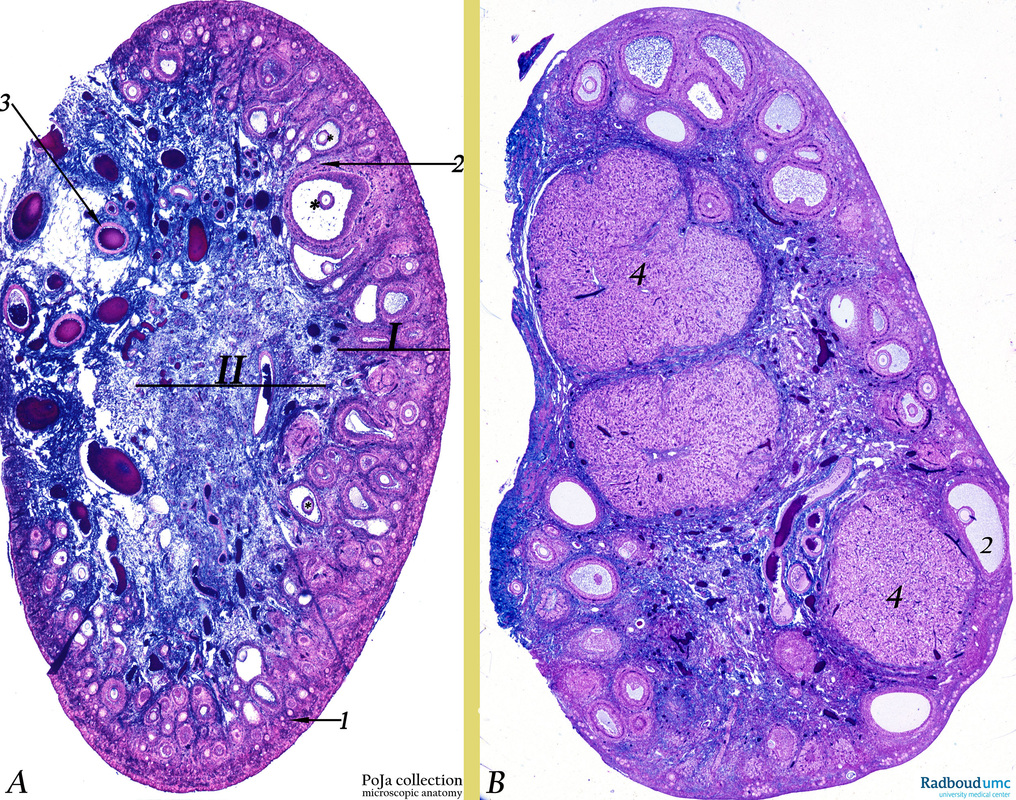7.1 POJA-L1203+L1307
Title: Survey of ovaries (rabbit)
Description: Stain: (A, B) Azan. I = cortex; II = medulla.
(A). Numerous follicles in various stages of development present in cortex (I). Primordial and preantral follicles are localized close to ovarian surface (→ 1). Towards the medulla larger antral follicles (2) are found and oocytes are marked by (*). Medulla (II) is characterized by loosened connective tissue (blue) and the deeper part shows draining large blood vessels (3).
(B): Compare with left ovary. This one contains three large corpora lutea (4); the other histological details are similarly depicted.
Background: On cross-section in situ corpora lutea are large yellowish-colored aggregation of cells. The parenchyma of a corpus luteum is composed of epithelial-like clusters or sheets of formerly granulosa and theca interna cells. The former has differentiated into granulosa lutein cells after producing the yellow carotenoid pigment lutein and progesterone and estrogen. The latter is differentiated into theca lutein cells that also produce hormones like progesterone and androstenedione (see also POJA-L1211+L1236+L1241).
Keywords/Mesh: female reproductive organs, ovary, ovarian follicle, granulosa cells, corpus luteum, female genitalia, histology, POJA collection
Title: Survey of ovaries (rabbit)
Description: Stain: (A, B) Azan. I = cortex; II = medulla.
(A). Numerous follicles in various stages of development present in cortex (I). Primordial and preantral follicles are localized close to ovarian surface (→ 1). Towards the medulla larger antral follicles (2) are found and oocytes are marked by (*). Medulla (II) is characterized by loosened connective tissue (blue) and the deeper part shows draining large blood vessels (3).
(B): Compare with left ovary. This one contains three large corpora lutea (4); the other histological details are similarly depicted.
Background: On cross-section in situ corpora lutea are large yellowish-colored aggregation of cells. The parenchyma of a corpus luteum is composed of epithelial-like clusters or sheets of formerly granulosa and theca interna cells. The former has differentiated into granulosa lutein cells after producing the yellow carotenoid pigment lutein and progesterone and estrogen. The latter is differentiated into theca lutein cells that also produce hormones like progesterone and androstenedione (see also POJA-L1211+L1236+L1241).
Keywords/Mesh: female reproductive organs, ovary, ovarian follicle, granulosa cells, corpus luteum, female genitalia, histology, POJA collection

